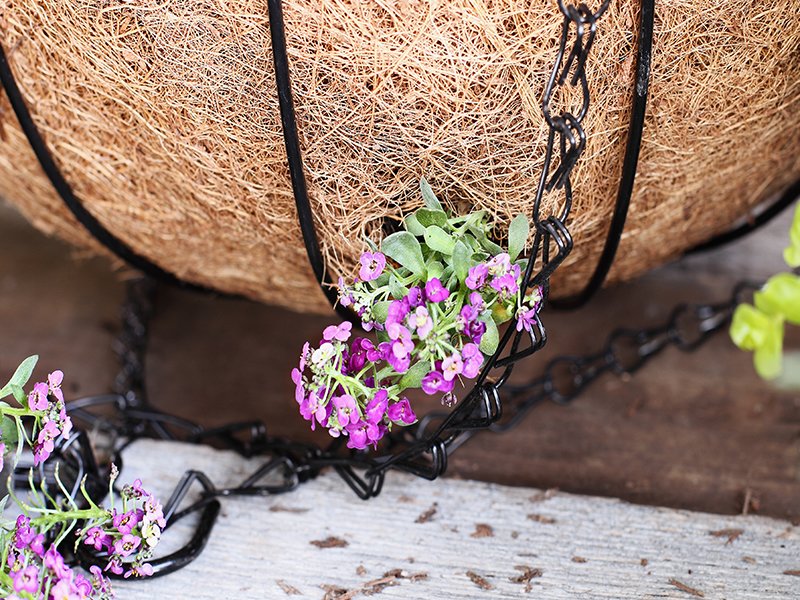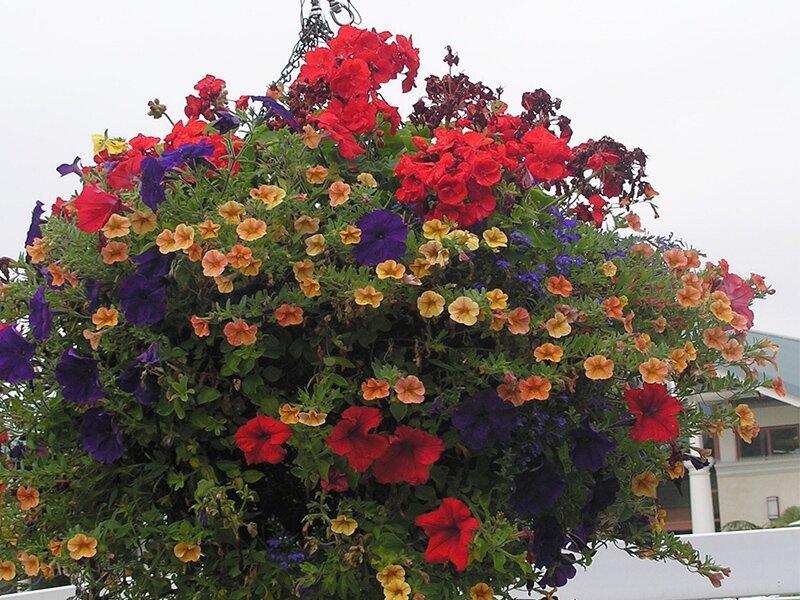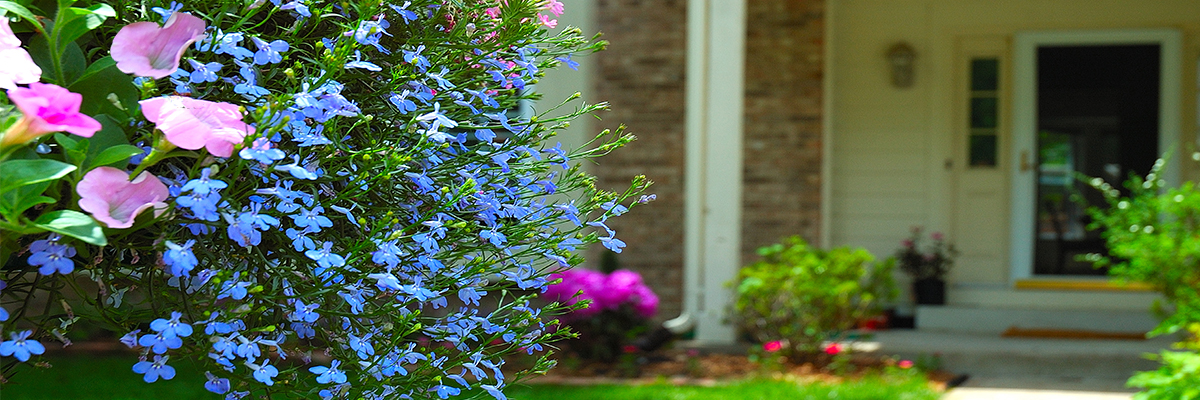Amazing summer baskets
Have you always wanted to create a fabulous hanging basket, but didn't know where to start?
It's really not that difficult, so read on and amaze your friends and neighbours with
your fantastic summer basket this year.

Step 1 - Choosing the basket
First think about the basket you’re going to use. If it’s your first ever hanging basket we’d recommend a basket with a closed bottom rather than an open-work basket. You can get very attractive baskets woven from natural materials such as rattan, coir, banana leaf and other rope materials, and the closed bottom means you don’t have to worry about planting the sides of the basket. You could also choose a closed bottom basket made from recycled materials - they look just like the natural materials but have the advantage of being longer-lasting.
If you want the open-work wire basket look, you’ll need to think about the liner that contains the compost and plants. There’s all sorts of liners available, but we find that coir liners work very well both from a practical and aesthetic perspective.

Step 2 - Get ready to start
If you’re using a closed-bottom basket, they generally come pre-lined with plastic or polythene to help retain moisture and protect the fabric of the basket. But they do need drainage, so make sure you pierce a few holes in the bottom of the liner before you begin.
The open-work basket liner may - or may not - come with pre-cut holes to enable you to plant the sides of the basket. If you cut your own holes, try to keep them as small as possible (to keep the compost in the basket).
To plant the sides of a basket, you need to work in layers, filling the compost up to the level of where you want to place the lowest plants, put those in position, add more compost to define the next level and so on.
Take care when planting the plants through the small holes in the sides as it’s easy to cause damage – an simple trick is to roll the whole plant in a ‘cone’ of newspaper, and feed the ‘cone’ through from the outside until you have the roots inside the basket and the plant outside. Once the plant is in place, simply tear off the newspaper.

Step 3 - Choosing your plants
This is where the fun really begins!
An easy way to work out what you need is to think ‘Thrillers, Fillers and Spillers’!
The ‘Thriller’ is the centre-piece of your basket and will be an upright-growing plant that gives height. There’s lots of options for Thrillers including Geranium, Marguerite and Osteospermum that will flower plentifully throughout the summer.
‘Fillers’ -as the name suggests- are plants that will fill the middle layer, and for this you need varieties that have an ‘arching’ habit – firstly growing upwards then arching over as they grow. We recommend that you use plants that have been developed for use in baskets and planters because these will have been cultivated for their excellence in colour, growth and form. Any reputable garden centre will offer a good range of Basket & Patio plants – with lots of help and advice too.
Your ‘Spillers’ are, of course, your trailing plants. Whilst the thrillers and fillers are almost always chosen for their flowers, the spillers might also include plants with unusual foliage. For example, Nepeta variegata, Lysmachia, or Rhodochiton can add a complementary cream, golden or deep red backdrop to the display.

Step 4 - Looking after your basket
Sadly, this is often where things go wrong, and the problem is usually underestimating the amount of water a hanging basket requires. Provided you have good drainage in your basket, it is virtually impossible to over-water a hanging basket during the summer months. And whilst we all understand that the basket will dry out more on a warm day, wind has the potential to be even more drying – just think how quickly the washing dries on a breezy day! We suggest that hanging baskets are watered at least once a day, and on a particularly drying day you may need to water more often.
Check that your compost is nicely damp after watering – if the compost gets too dry, the water will simply run right through the basket and won’t dampen the compost. It’s easy to rehydrate though – just water several times with few minutes in between and with each watering, more water will be absorbed until the compost is thoroughly dampened again. A watering lance is helpful to reach your hanging baskets, or use one of the bespoke pulley hangers that enable you to lower the basket for watering.
A good compost will incorporate slow-release fertiliser that will provide feeding over a few weeks. However, you have a lot of plants in a small space and it’s likely that you’ll need additional feed as the plants grow. Our hanging baskets at Merryhatton generally get a liquid feed included in our watering once or twice a week.
Dead-head frequently to encourage new flowers and remove any dead foliage to keep the basket clean and free from disease.
And that’s about it! As ever, if you have any questions or need advice that we’ve not covered here, our plant team are always more than happy to help.


